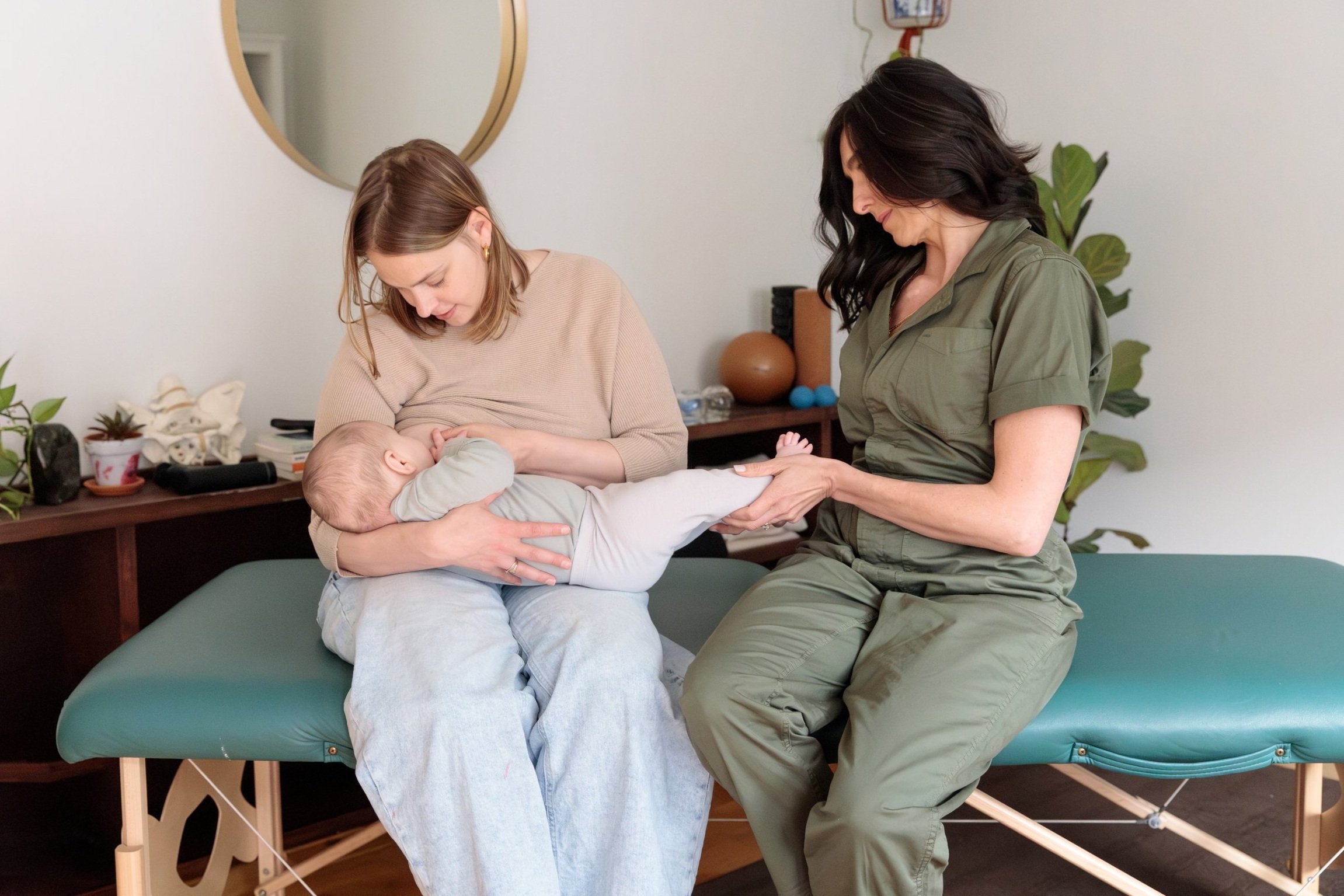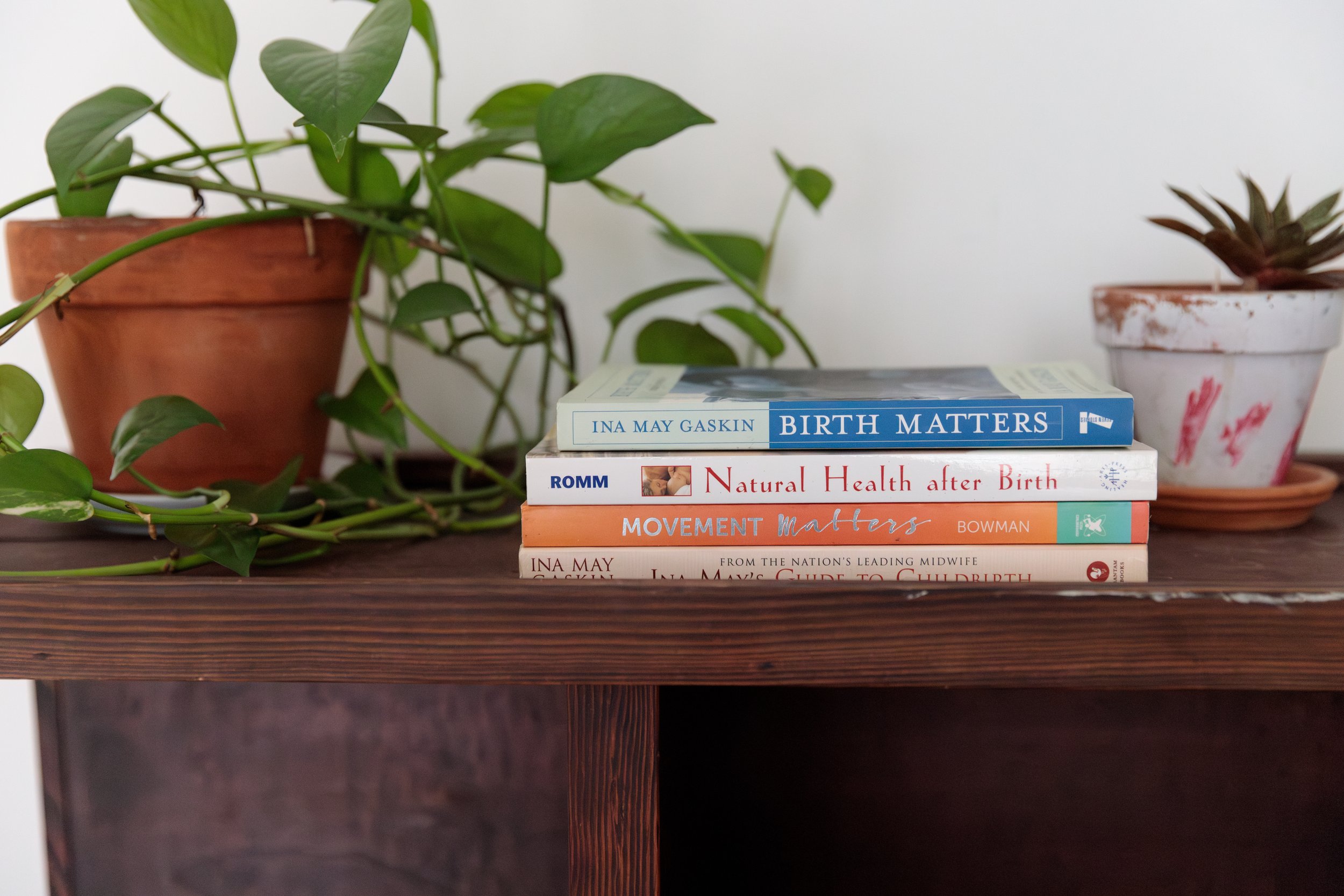
PRENATAL + POSTPARTUM CARE
Prenatal Care
I'm passionate about making pregnancy a comfortable journey, believing that it should be a time of joy, not pain. My aim is to ease any discomforts while enhancing optimal alignment in your structural frame, ensuring your baby has the freedom to move and grow. Beyond the physical perks of prenatal bodywork, my care creates a soothing atmosphere, lessening stress and empowering expecting mothers to trust in their body's natural birthing abilities. I want every session to leave you feeling genuinely cared for during this extraordinary time.
Prenatal Care and the Webster Technique
Asymmetry in the pelvis can lead to tension or torsion on the soft tissues connected to the pelvis/sacrum and uterus. Factors contributing to this asymmetry include prolonged sitting, a tight abdomen, previous injuries, less-than-ideal posture, overuse, and overall tension in the system. Employing the Webster Technique and other bodywork methods, I naturally encourage your baby to shift into a more favorable birthing position.
Through careful and gentle pressure, I release tension in the soft tissues connected directly or indirectly to your uterus (without any manipulation of the uterus itself) creating more space for your baby to comfortably shift and move head down. My goal is to align your body, which encourages the baby to move into an optimal birthing position allowing for a smoother delivery while also reducing tension on their developing musculoskeletal system.
What to expect
Structural adjustments
Targeted/specific soft tissue release techniques (myofascial release and craniosacral fascial release)
Pelvic floor breathwork for strength and tension release
Movement and mobility education
Nutrition and prenatal health guidance
Benefits of my care
Balanced pelvis and body
Reduced stress on joints and tissues
Reduced uterine tension (allowing the baby to move more freely, preventing restrictions in the baby’s movements)
Aids in positioning the baby ideally for delivery
Released tension and increased mobility
Facilitates a quicker and easier labor
Techniques I use
-
The Webster technique, a specific chiropractic analysis, offers a natural and gentle approach to prevent breech or malposition in pregnancy by addressing subtle changes in each woman's unique body. These changes can affect the spine, sacrum, and pelvis. Sacral subluxation and pelvic misalignment may contribute to difficult labor (dystocia) due to issues like inadequate uterine function, pelvic contraction, and baby malpresentation. Correcting these misalignments may positively impact the causes of dystocia.
-
These techniques aim to train your diaphragm and pelvic floor to collaborate, releasing tension and reducing intra-abdominal pressure. Applicable at any life stage, the focus is on practicing a proper kegel (not a forced contraction) to establish a connection with the floor, aiding in the birth and pushing stages.
-
Craniosacral Fascial Therapy (CFT) is a technique that centers on the craniosacral fascial system, originating in the body's core around the brain and spinal cord, extending through the fascial web. In a healthy system, there is free flow of cerebrospinal fluid from the brain, down the spine, to the sacrum, and into the fascia. This technique listens to the body and gently unwinds the system, releasing fascial tension.
-
By applying pressure to the soft tissue, this technique can alleviate tightness and tension in a specific area, allowing the entire system to unwind. Aimed at restoring function, reducing pain, and improving blood flow, these treatments release the tissues, allowing a patient's motion to be restored and enabling all systems to operate without interference.
Postpartum Care
Postpartum body work is important for new mothers as it plays a pivotal role in their overall well-being and recovery. Often, so much love and attention are given to the prenatal body, while the postpartum body is overlooked until symptoms of dysfunction arise. This postpartum period, marked by physical changes and adjustments, demands thoughtful attention to address discomfort and promote healing. As the new body is navigating its way back to normalcy, my care can alleviate muscle tension, enhance alignment, and support the body's natural recovery processes. Beyond the physical aspects, postpartum bodywork contributes to emotional and mental well-being, empowering mothers to embrace self-care and navigate the journey into motherhood with confidence and knowledge.
What to expect
Structural adjustments
Targeted/specific soft tissue release techniques (myofascial release, craniosacral fascial release, cupping, Graston, etc.)
Pelvic floor and core breathwork for strength and tension release
Movement and mobility education
Nutrition and postpartum health guidance
Postural support and education
Benefits of my care
Balanced pelvis and body. We want to ensure you are healing correctly.
Released tension and increased mobility
Decreased inflammation and lymphatic release
Education and confidence
Techniques I use
-
Adhesion release on surgical scar tissue aims to alleviate tension on the colon, ovaries, or between the bladder and uterus that may develop as a result of surgery.
-
These techniques aim to train your diaphragm and pelvic floor to collaborate, releasing tension and reducing intra-abdominal pressure. Applicable at any life stage, the focus is on practicing a proper Kegel (not a forced contraction) to establish a connection with the floor, aiding in the birth and pushing stages.
-
Craniosacral Fascial Therapy (CFT) is a technique that centers on the craniosacral fascial system, originating in the body's core around the brain and spinal cord, extending through the fascial web. In a healthy system, there is free flow of cerebrospinal fluid from the brain, down the spine, to the sacrum, and into the fascia. This technique listens to the body and gently unwinds the system, releasing fascial tension.
-
By applying pressure to the soft tissue, this technique can alleviate tightness and tension in a specific area, allowing the entire system to unwind. Aiming to restore function, decrease pain and improve blood flow, these treatments release the tissues, allowing a patient's motion to be restored, and enabling all systems to operate without interference.

Interested in learning more about how Dr. Ready can support your birth journey?



